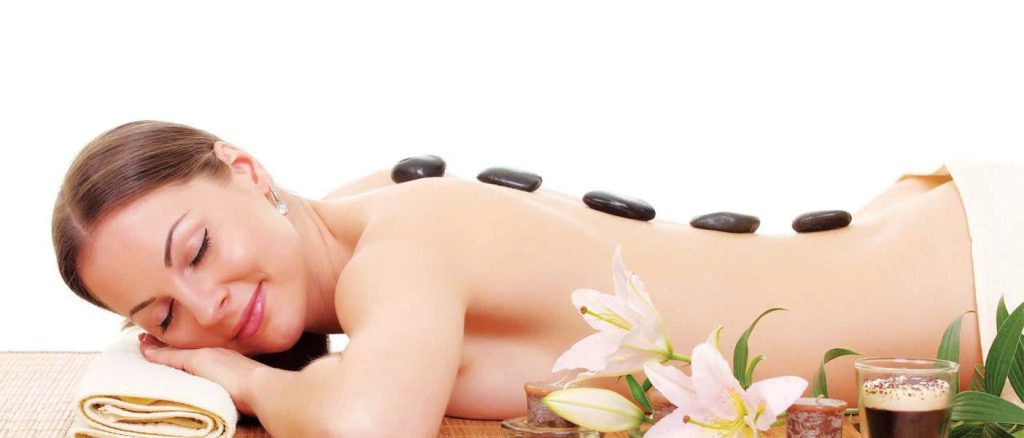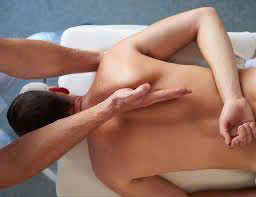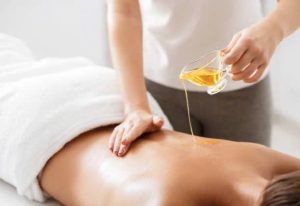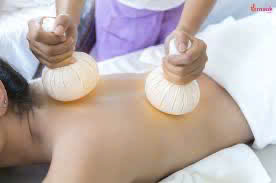Struggling with stress, poor sleep, or back pain? Let massage therapy change your life.
In today’s fast-paced world, many individuals grapple with stress, sleep disturbances, and persistent back pain. These issues can seem overwhelming, but massage therapy offers a natural, effective way to address these concerns. Whether you’re seeking relief from tension, better sleep, or a break from pain, massage therapy can transform your well-being in profound ways. Curious about which type of massage therapy might suit your specific needs? Wondering which style offers the best benefits? This comprehensive guide is designed to illuminate the various massage techniques available, helping you decide how to incorporate this therapeutic practice into your life.
Unlock the power of massage therapy—relieve pain, relax muscles, and recharge your entire body! From deep tissue techniques to gentle strokes, massage therapy encompasses an array of styles, each tailored for different goals. Let’s explore the different styles, their unique features, and how to choose the perfect one for you. Plus, we’ll clarify what differentiates therapeutic massage from simple relaxation massages, so you can make informed decisions about your health.

Massage therapy
Massage therapy is an ancient healing practice rooted in various cultures worldwide. Over time, it has evolved into a highly sophisticated set of techniques aimed at improving physical health, reducing mental stress, and enhancing overall wellness. Unlike superficial relaxation, massage therapy often targets specific issues—such as muscle tension, joint pain, or circulation problems—making it an integral part of holistic health care.
The core principle behind massage therapy is manual manipulation of soft tissues—muscles, tendons, ligaments, and connective tissues. Skilled practitioners use their hands, elbows, or specialized tools to knead, stretch, and apply pressure, promoting healing and relaxation. It’s a personalized approach, adaptable to each individual’s needs, combining science with intuitive touch.
In recent years, massage therapy has gained recognition within mainstream healthcare circles, not only for relaxation but also as a complementary treatment for chronic illnesses, mental health struggles, and physical ailments. Its benefits extend beyond temporary relief—regular sessions can improve posture, boost immune function, and foster better emotional health. This holistic impact underscores why more people are turning to massage therapy as a fundamental part of their self-care routine.
The origins and evolution of massage therapy
Massage therapy’s roots can be traced back thousands of years across civilizations such as Egypt, China, India, and Greece. In ancient Egypt, tomb paintings depict massage-like techniques used to treat ailments. Traditional Chinese Medicine integrated acupressure and massage to balance energy flow, while Indian Ayurveda often included massage as a vital element of healing rituals.
The evolution of massage into modern practices involved scientific research and technological advancements. Today, various schools of thought have emerged, each emphasizing specific techniques tailored to health outcomes. From Swedish massage to sports therapy and deep tissue techniques, each style is designed to serve different physical or psychological needs.
The benefits of professional massage therapy
When performed by trained professionals, massage therapy can produce profound health benefits. These include enhanced blood circulation, reduced muscle tension, improved flexibility, and decreased inflammation. On the psychological side, massage reduces cortisol levels— the stress hormone — while increasing endorphins, fostering a sense of well-being.
Moreover, regular massage therapy sessions can help manage chronic pain, such as fibromyalgia or arthritis, making everyday tasks more manageable. For athletes, massage can accelerate recovery, improve performance, and prevent injuries. For busy professionals or individuals experiencing high stress levels, massage provides a necessary mental reset, helping to lower anxiety and improve mood.

The importance of personalized treatment plans
Every person is unique, and so should be their approach to massage therapy. A skilled massage therapist will assess your specific conditions, lifestyle, and preferences before designing a customized treatment plan. This tailored strategy ensures you get the maximum benefit, whether you’re seeking relaxation, pain relief, or improved mobility.
During your initial consultation, therapists may inquire about your medical history, daily routines, and any particular issues you face. They might combine different techniques or focus on particular areas to achieve the best outcomes. The personalized nature of massage therapy makes it a versatile and effective modality for a wide range of health concerns.
Wondering which type of massage therapy is right for you? Discover the different styles and find out how to choose the perfect one for your needs!
Choosing the right massage therapy can seem daunting given the multitude of options available. Each style offers unique benefits, techniques, and target areas. Understanding the differences can empower you to select a modality that aligns with your goals, whether it’s reducing stress, alleviating muscle pain, or improving mobility.
The best approach is to consider your primary needs and any underlying health issues. For example, if deep muscle tension is your concern, a deep tissue massage might be suitable. If relaxation and mental calmness are your goals, a Swedish or aromatherapy massage could be ideal. Here’s an overview of popular styles, their characteristics, and their ideal applications.
Swedish massage
Often considered the most traditional form of massage, Swedish massage uses gentle, flowing strokes combined with kneading, tapping, and circular movements. It is mainly aimed at promoting relaxation and increasing circulation.
This style is perfect for beginners or those seeking stress relief, as it provides a soothing experience that eases muscular tension without being too intense. Swedish massage can also serve as an introduction to massage therapy for people new to the practice.

Deep tissue massage
Deep tissue massage involves firmer pressure and targeted strokes to reach deeper layers of muscle and fascia. It is often used to treat chronic pain, injury recovery, or areas of significant muscle rigidity.
While it might cause some discomfort during sessions, the benefits include breaking down scar tissue, relieving knots, and restoring mobility. Deep tissue is particularly beneficial for athletes or individuals with persistent muscular issues.
Sports massage
Specially designed for athletes and active individuals, sports massage combines techniques such as stretching, compression, and trigger point therapy. It aims at improving athletic performance, preventing injuries, and speeding up recovery after intense physical activity.
This style is adaptable to different sports and training routines, focusing on the specific muscles used during exercise. It also helps in reducing delayed-onset muscle soreness (DOMS).
Aromatherapy massage
This style integrates essential oils with massage techniques to enhance emotional and physical healing. Aromatherapy massage creates a calming atmosphere, promoting mental clarity, emotional balance, and relaxation.
Ideal for those dealing with anxiety, depression, or emotional stress, this massage type combines the benefits of touch therapy with aromatic influences. It can be tailored with oils like lavender, chamomile, or eucalyptus depending on your mood and needs.
Hot stone massage
In hot stone massage, smooth, heated stones are placed on specific points of the body or used as an extension of the therapist’s hands to deliver heat deeply into muscles.
This technique promotes circulation, relaxes tense muscles, and alleviates muscle stiffness. It is particularly effective for individuals with joint pain or chronic muscle tension, offering a soothing and deeply relaxing experience.
Shiatsu massage
Originating from Japan, Shiatsu involves finger pressure on specific acupressure points across the body. It aims to unblock energy pathways and restore balance within the body’s systems.
Shiatsu can address various physical and emotional issues, making it suitable for stress, fatigue, or chronic health conditions. Its rhythmic, acupuncture-inspired approach offers a unique blend of relaxation and therapeutic effect.
Choosing the best style for your needs
Selecting the right massage therapy style depends on your individual health goals, preferences, and any medical conditions. It’s often beneficial to consult with a licensed massage therapist who can evaluate your needs and recommend the most appropriate technique. Don’t hesitate to try different styles to discover which one resonates most with you.
Some factors to consider include your pain points, stress levels, desired intensity, and whether you prefer a relaxing or more invigorating experience. Most importantly, ensure that your chosen massage modality is practiced by a reputable, certified professional.

Unlock the power of massage therapy – relieve pain, relax muscles, and recharge your entire body!
Massage therapy isn’t merely a luxury; it is a potent tool for healing and rejuvenation. The technique’s ability to target specific issues makes it an integral complementary therapy across various healthcare settings. Whether your goal is to relieve acute pain, manage a chronic condition, or simply find a moment of peace amidst a hectic schedule, understanding and harnessing the power of massage therapy can profoundly transform your physical and emotional well-being.
Physical pain relief
One of the primary benefits of massage therapy is its capacity to alleviate pain. This can range from localized discomfort resulting from sports injuries to chronic issues like headaches or lower back pain. Massage stimulates blood flow to affected areas, removes metabolic waste products, and reduces muscle tension—all vital processes for pain reduction.
Deep tissue massage, in particular, is highly effective for addressing deep-seated pain and muscle knots. By breaking apart adhesions and fostering tissue healing, massage can speed up recovery times and reduce dependence on medications. Additionally, targeted massage can help improve joint mobility in conditions such as rheumatoid arthritis or osteoarthritis.
Stress reduction and mental health
Chronic stress undermines physical health and mental resilience. Massages trigger the parasympathetic nervous system—the part responsible for relaxation—reducing cortisol levels and boosting serotonin and dopamine. These neurochemicals promote calmness, improve mood, and enhance sleep quality.
Incorporating regular massage sessions into your wellness routine can mitigate anxiety, depression, and daily mental fatigue. The soothing touch also fosters a connection between mind and body, encouraging mindfulness and emotional balance.
Enhancing circulation and immune function
Improved circulation ensures nutrients and oxygen are efficiently delivered to tissues while waste removal is optimized. Massage therapy stimulates blood and lymph flow, supporting immune health and aiding detoxification.
Enhanced circulation can also help reduce swelling, improve skin health, and facilitate recovery from injuries. For individuals with compromised immune systems, regular sessions may bolster resilience and overall vitality.
Cellular and tissue repair
Massage encourages cellular repair by enhancing nutrient delivery and waste removal at the tissue level. It promotes collagen production, which is essential for skin elasticity, and supports the healing of damaged tissues.
This regenerative effect is especially beneficial post-injury or surgery. By stimulating the body’s natural healing processes, massage accelerates recovery and helps restore full function.
Emotional rejuvenation and overall vitality
Beyond physical benefits, massage therapy nurtures mental and emotional health. The sensory experience can alleviate feelings of anxiety and depression, fostering a sense of peace, balance, and renewal.
Many clients report feeling energized and recharged after therapy, ready to face daily challenges with renewed focus and positivity. This combination of physical and emotional benefits underscores massage therapy’s holistic approach to wellness.
Relax muscles
Muscle relaxation is arguably the most common reason people seek massage therapy. Chronic muscle tension not only causes pain but can also lead to postural problems and limited mobility. Relaxing muscles safely and effectively requires specialized techniques that target tension points and promote elasticity.
The impact of tension on health
Muscular tension is often a response to stress, poor posture, or repetitive movements. Persistent tightness can lead to headaches, back pain, and decreased range of motion. When muscles stay contracted longer than necessary, they become less efficient, resulting in fatigue and discomfort.
Unrelieved tension can also alter the natural biomechanics of your body, leading to compensation patterns that cause further strain or injury. Therefore, proactive muscle relaxation through massage is crucial for maintaining physical health.
Techniques for effective muscle relaxation
Massages aimed at relaxing muscles typically involve gentle, rhythmic strokes combined with stretching and compression. Techniques like Swedish massage excel at calming the nervous system and easing superficial muscles. For deeper relaxation, myofascial release and gentle cross-fiber strokes help soften connective tissues.
The use of heat—such as warm towels or hot stones—can further relax muscles by increasing blood flow and reducing stiffness. Incorporating breathing exercises during therapy can deepen relaxation and help clients become more aware of tension held in their bodies.
The role of massage in injury prevention
Relaxed muscles are less prone to injury since they can absorb stresses and adapt to movement more effectively. Regular massage sessions help keep muscles supple, improve flexibility, and prevent strain injuries—especially important for athletes and active individuals.
For those with sedentary lifestyles, muscle relaxation can counteract the negative effects of prolonged sitting, which tends to cause stiffness and postural problems. Keeping muscles relaxed and elastic promotes better movement and protects joints and bones.
Personalized approaches for muscle relaxation
Every individual’s tension patterns are different, requiring tailored massage strategies. A therapist might focus on particular areas—such as neck, shoulders, or lower back—using specific techniques designed to release tightness and restore balance.
Incorporating stretches post-massage or recommending self-care practices like foam rolling or yoga can augment the benefits and promote ongoing muscle health. The goal is not only immediate relief but sustained relaxation and resilience.
And recharge your entire body!
Massage therapy’s restorative power extends beyond individual tissues—it revitalizes your whole body and mind. Engaging in massage sessions regularly can lead to a profound sense of renewal, energizing you to tackle daily challenges with vitality. Understanding how to harness this power ensures you get maximum benefit from each treatment.
Rejuvenation of the nervous system
Massage stimulates the parasympathetic nervous system—the “rest and digest” response—calming an overactive sympathetic system triggered by stress. This shift allows your body to recover, repair, and recharge. Frequent massages can recalibrate your nervous system, leading to improved stress resilience and emotional stability.
Boosting energy levels
Massages increase circulation, delivering oxygen and nutrients to tissues, which fuels cellular activity. Improved lymphatic drainage also helps eliminate toxins, reducing feelings of sluggishness. The combined effect results in increased alertness and physical energy, making you feel more vibrant and capable.
Improving sleep quality
Stress and pain often interfere with restful sleep. Massage therapy can address these issues by lowering cortisol levels and promoting melatonin secretion. Better sleep enhances cognitive function, mood, and overall health, creating a positive feedback loop of well-being.
Holistic recharge
The sensation of being physically relaxed and mentally clear is a powerful form of recharge. It enhances your capacity to handle stress, improves concentration, and promotes proactive health behaviors. Regular massage therapy sessions become not only a treatment for specific issues but also an essential part of maintaining long-term vitality.
What’s the difference between massage therapy and a relax massage?
Many people mistakenly assume that all massages are the same, but understanding the distinctions can help you choose the Ideal treatment for your needs. While relax massage techniques share certain characteristics, there are fundamental differences compared to broader massage therapy practices.
Definitions and scope
A relax massage generally refers to gentle, soothing strokes aimed at stress relief and mental relaxation. It often involves light pressure, aromatic oils, and calming music. Relax massage is primarily about creating a peaceful environment where the client can unwind.
In contrast, massage therapy encompasses a wide range of techniques— from relaxation to targeted pain relief, injury rehabilitation, or specific medical purposes. It requires training and knowledge of anatomy, physiology, and pathology to tailor treatments precisely to individual needs.
Goals and outcomes
The primary goal of a relax massage is to promote mental calmness and superficial muscle relaxation. It’s often chosen for stress management, pampering, or as an adjunct to wellness routines.
Massage therapy, on the other hand, might aim to relieve chronic pain, improve mobility, correct postural issues, or facilitate injury healing. Its techniques are more diverse and often more intense or focused than traditional relaxation massages.
Techniques and intensity
Relax massage techniques typically involve gentle, flowing movements, light to moderate pressure, and soothing strokes. They prioritize comfort and mental ease.
Therapeutic massage may involve deeper, more precise pressure, stretching, and targeted manipulation. It is often more physically demanding and requires practitioner expertise to avoid causing discomfort or harm.
Certification and professionalism
In many regions, the title massage therapist is protected legally, requiring certification and adherence to professional standards. Massages labeled as relaxation treatments may be offered by a range of providers, but therapeutic techniques should only be performed by trained and licensed professionals.
Understanding these distinctions enables you to select the service that best matches your expectations and health goals, whether it’s a calming massage to unwind or a precise therapeutic session to address specific ailments.https://www.google.com/knowledgegraphshares?client=mobilesearchapp&sca_esv=b028dc8ec1d9dff5&bih=879&biw=428&channel=iss&cs=0&hl=vi&rlz=1MDAPLA_viAE995AE995&v=372.0.765951532&sxsrf=AE3TifM54Yon2BzKzAbwaxh-sMX16CRcag:1750078915591&kgmid=/g/11ldd2b847&q=Thai+massage+-+spa+massage+home+service+downtown+Dubai&shndl=30&shem=lcuae,uaasie&source=sh/x/loc/tile/m1/5&kgs
## Conclusion
Massage therapy stands as a versatile and powerful modality for enhancing physical, emotional, and mental health. By understanding the different types of massage, from Swedish to deep tissue, sport, or aromatherapy, you can make informed choices tailored to your unique needs. Whether your goal is to relieve pain, relax tense muscles, or simply recharge your entire body, the right massage technique can be transformative. Remember that professional guidance ensures safe, effective treatments and maximum benefits. Embrace the potential of massage therapy — a natural path toward holistic well-being that can truly change your life.https://jobedubaispa.com/massage-mistakes/
